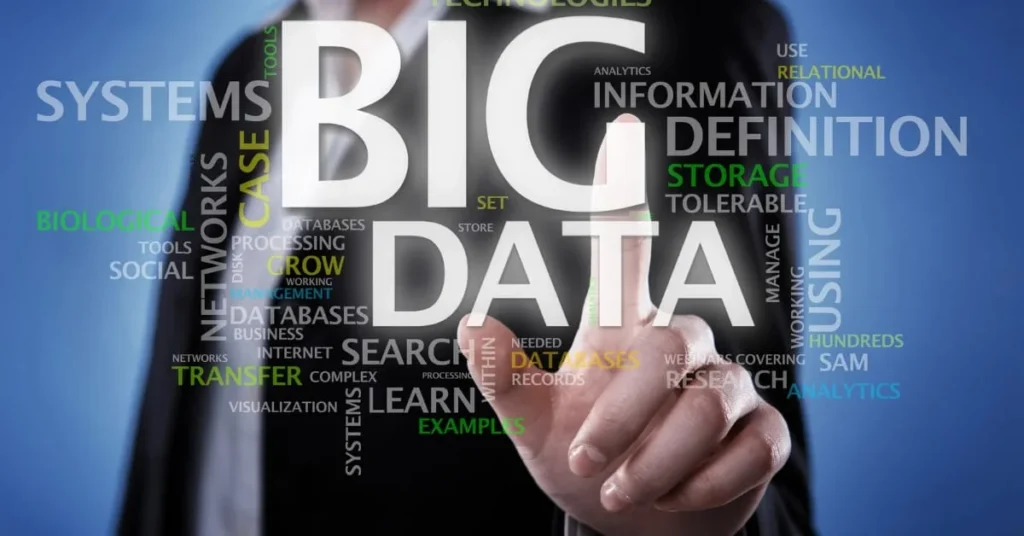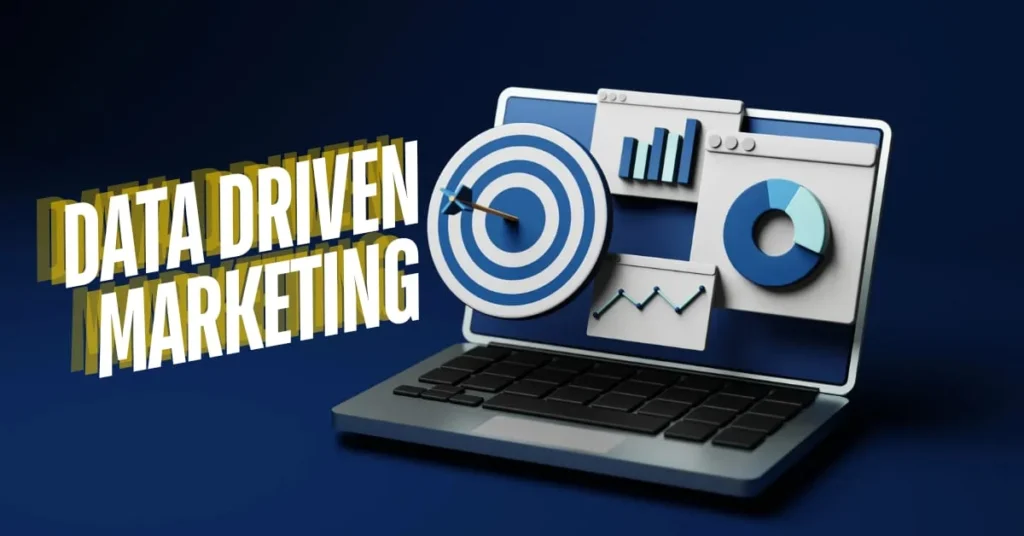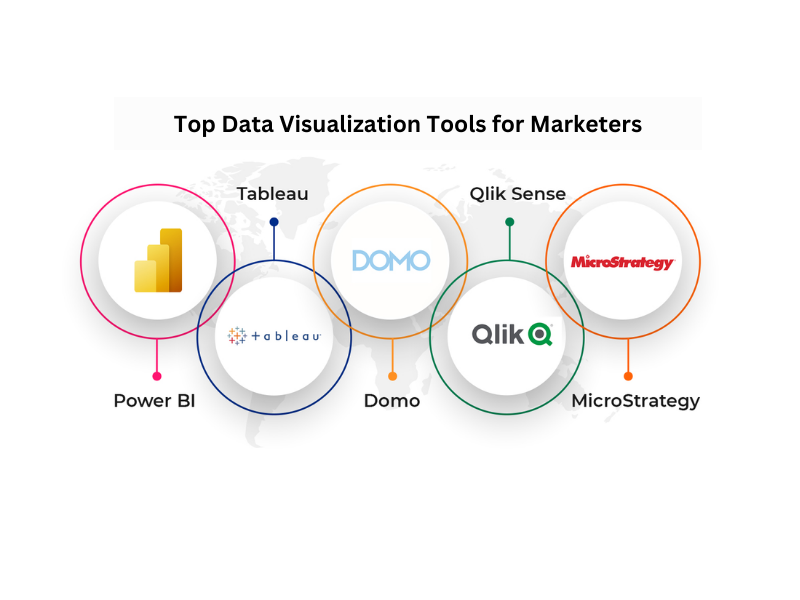Imagine if you could predict your customers’ needs before they even know them. Sounds like a dream, right? Well, thanks to big data, it’s not just wishful thinking—it’s a reality. Every click, search, and scroll creates a digital footprint, adding to a massive pool of data that businesses can tap into. For marketers, this wealth of information is like striking gold. It opens up endless possibilities to understand your audience better, create personalized experiences, and ultimately, drive more conversions. But here’s the kicker: not everyone knows how to harness the power of big data effectively.
In today’s digital age, data is the new currency. With an estimated 2.5 quintillion bytes of data being generated every day, companies that can leverage this resource are setting themselves up for success. But what exactly does it mean to be data-driven in marketing? And how can businesses, big or small, use data to boost their marketing efforts? This post will dive into these questions, providing actionable insights to help you transform your marketing strategy using big data. Ready to unlock the power of data and take your marketing to the next level? Let’s dive in!
Understanding Big Data in Marketing

So, what exactly is big data, and why is everyone talking about it? Simply put, big data refers to the massive volume of information—both structured and unstructured—that’s generated every second of every day. Think about all the actions people take online: browsing websites, posting on social media, making purchases, and even streaming their favorite shows. Each of these actions produces data that can be collected and analyzed.
In marketing, big data helps us understand our customers on a deeper level than ever before. We’re no longer just guessing at what people might want or need; we can use real-time data to see exactly how they behave. This means that marketers can make smarter decisions, tailor campaigns to specific audiences, and predict trends before they even happen. Essentially, big data takes the guesswork out of marketing, replacing it with precision and accuracy.
The Types of Data in Marketing
To get a clearer picture, let’s break down the types of data commonly used in marketing:
- Customer Behavior Data: This includes information on how customers interact with your brand. Think of it as a digital diary of their actions—what they click on, how long they stay on a page, and what they buy.
- Social Media Data: Social networks are a treasure trove of insights. From likes and shares to comments and mentions, this data shows how customers feel about your brand and what kind of content resonates with them.
- Transactional Data: This is the data you collect every time someone makes a purchase. It’s not just about what they bought, but also when, where, and how. Analyzing this can help you understand purchasing patterns and optimize your sales strategies.
By analyzing these different types of data, marketers can create a 360-degree view of their customers. This comprehensive understanding allows for more targeted marketing campaigns, better customer experiences, and ultimately, increased sales and loyalty.
Transforming Customer Understanding with Big Data
Picture this: You’re launching a new product, and instead of guessing who might buy it, you already have a detailed profile of your ideal customer. You know their preferences, their online behavior, and even their purchasing patterns. This isn’t magic—it’s the power of big data in action.
Big data allows marketers to dive deep into customer behavior and uncover insights that were previously unimaginable. By analyzing vast amounts of data from various sources, you can build detailed customer personas and predict future behavior. This level of understanding transforms how you approach your marketing strategy.

How Big Data Enhances Customer Insights
1. Personalized Marketing:
- With big data, personalization moves beyond just using a customer’s name in an email. You can create highly tailored marketing messages that resonate with each individual. By analyzing data such as past purchases, browsing behavior, and engagement history, you can send personalized recommendations, offers, and content that are most likely to convert.
2. Predictive Analytics:
- Predictive analytics uses historical data to forecast future customer behavior. Imagine knowing which customers are likely to churn or identifying those who might be interested in a new product. This insight allows you to proactively engage with customers, offering timely promotions or interventions that can prevent churn and increase customer retention.
3. Customer Segmentation:
- Not all customers are the same, and big data helps you recognize the differences. By segmenting your audience based on various factors such as demographics, purchase history, and engagement level, you can tailor your marketing strategies to different groups. This targeted approach ensures that your message is reaching the right people at the right time.
4. Real-Time Insights:
- The beauty of big data is that it’s often available in real time. This means you can track how customers interact with your brand and make adjustments on the fly. If a campaign isn’t performing as expected, you can tweak your strategy immediately, rather than waiting until it’s too late.
Real-World Example: Netflix and Its Data-Driven Strategy
Netflix is a prime example of a company that uses big data to transform customer understanding. By analyzing viewing habits, Netflix doesn’t just recommend shows and movies; it also decides what content to produce. This data-driven approach has led to hits like House of Cards and Stranger Things. They know what genres are popular, which actors resonate with audiences, and even what time of day people are most likely to binge-watch.
By leveraging big data, Netflix has created a personalized viewing experience for each user, enhancing customer satisfaction and driving loyalty. This is the power of understanding your customer through data—it’s about giving them exactly what they want, sometimes even before they know it themselves.
Tools and Technologies for Big Data in Marketing
Harnessing the power of big data doesn’t happen by chance—it requires the right tools and technologies. Think of these as your marketing toolkit, designed to help you collect, analyze, and interpret data effectively. From simple analytics platforms to sophisticated machine learning algorithms, there’s a wide range of tools available to marketers today. But with so many options, how do you choose the right one for your needs?
Let’s break down some of the most popular tools and technologies that can help you make sense of big data and use it to drive your marketing strategy forward.

1. Google Analytics
- Overview: Google Analytics is a free tool that provides insights into website traffic and user behavior. It’s an excellent starting point for marketers looking to understand their audience and track the effectiveness of their digital marketing efforts.
- Key Features: Traffic reports, audience demographics, user behavior tracking, and conversion tracking.
- Best For: Small to medium-sized businesses looking to get a basic understanding of website performance and user behavior.
2. Tableau
- Overview: Tableau is a data visualization tool that helps marketers turn complex data sets into understandable, interactive visuals. With Tableau, you can create dashboards that make it easy to see trends and patterns in your data.
- Key Features: Drag-and-drop interface, real-time data analysis, customizable dashboards, and the ability to connect to various data sources.
- Best For: Businesses of all sizes that need to analyze and visualize large data sets to make data-driven decisions.
3. HubSpot
- Overview: HubSpot is an all-in-one marketing, sales, and customer service platform. It offers a suite of tools that can help marketers collect and analyze data from various sources, manage customer relationships, and automate marketing campaigns.
- Key Features: Customer relationship management (CRM), email marketing, lead tracking, and marketing automation.
- Best For: Businesses looking for a comprehensive platform that combines marketing automation with CRM capabilities.
4. R and Python
- Overview: R and Python are programming languages widely used for data analysis and machine learning. They offer powerful libraries and packages that allow marketers to analyze big data, build predictive models, and automate data processing.
- Key Features: Advanced statistical analysis, machine learning capabilities, data visualization, and automation.
- Best For: Data analysts and marketers with a technical background who need advanced data analysis and predictive modeling capabilities.
5. IBM Watson
- Overview: IBM Watson is an AI-powered data analytics platform that helps businesses leverage machine learning and natural language processing to analyze large data sets. Watson can uncover hidden insights and provide recommendations based on data analysis.
- Key Features: Natural language processing, machine learning models, and predictive analytics.
- Best For: Enterprises that require advanced AI capabilities and have the resources to invest in a powerful data analytics platform.
Choosing the Right Tool for Your Needs
Selecting the right tool depends on your business size, goals, and technical expertise. Smaller businesses might start with free or low-cost tools like Google Analytics, while larger enterprises might invest in more sophisticated platforms like IBM Watson. The key is to choose tools that align with your marketing objectives and can scale with your business as it grows.
Remember, the best tool is one that your team can use effectively. It’s not about having the most advanced software—it’s about leveraging the tools that provide the most value for your specific needs.
Case Studies: Success Stories of Data-Driven Marketing

Sometimes, the best way to understand the impact of big data on marketing is to look at real-world examples. Companies across various industries have successfully leveraged data-driven insights to transform their marketing strategies and achieve impressive results. Let’s take a look at three standout case studies that highlight the power of big data in action.
1. Amazon: Personalization at Scale
Amazon is a pioneer in using big data to enhance the customer experience. With millions of customers worldwide, Amazon collects and analyzes vast amounts of data, including purchase history, browsing behavior, and even search queries. By leveraging this data, Amazon has perfected the art of personalization.
What They Did: Amazon uses sophisticated algorithms to recommend products based on customers’ past purchases and browsing history. For example, if you frequently purchase books on cooking, Amazon might suggest the latest culinary bestsellers or kitchen gadgets. This personalized approach makes shopping more relevant and engaging for customers.
Results: Amazon’s data-driven personalization strategy has significantly increased customer satisfaction and boosted sales. It’s estimated that personalized recommendations account for about 35% of Amazon’s total sales. This case shows how using big data to understand customer preferences can lead to a more tailored and profitable marketing strategy.
2. Netflix: Predicting Customer Preferences
Netflix has become a household name in streaming, thanks in large part to its data-driven approach to content and customer engagement. The company collects data on what shows and movies users watch, how long they watch, and even what time of day they prefer to stream content. This data helps Netflix make decisions about everything from content creation to marketing strategies.
What They Did: Netflix uses big data to predict what content will be popular with its audience. For instance, by analyzing viewing patterns and preferences, Netflix decided to invest in original content like House of Cards and Stranger Things, both of which became massive hits.
Results: By leveraging data to understand and predict viewer preferences, Netflix has not only improved its content offerings but also enhanced its marketing efforts. The data-driven strategy has helped Netflix reduce churn, attract new subscribers, and ensure that viewers are always engaged with the platform.
3. Coca-Cola: Real-Time Social Media Marketing
Coca-Cola is another company that has effectively used big data to drive its marketing strategy. In an era where social media plays a critical role in brand engagement, Coca-Cola has tapped into big data to track brand mentions, analyze customer sentiment, and understand trends in real time.
What They Did: During the 2014 FIFA World Cup, Coca-Cola used a data-driven marketing strategy to engage with fans in real time. By analyzing social media conversations, Coca-Cola was able to identify trending topics and create relevant, timely content that resonated with its audience.
Results: This real-time, data-driven marketing approach allowed Coca-Cola to increase brand visibility and engagement during one of the most watched sporting events in the world. The campaign was a huge success, demonstrating how companies can leverage big data to capitalize on real-time opportunities and connect with their audience in meaningful ways.
These case studies highlight the transformative power of big data in marketing. By analyzing customer behavior and leveraging insights in creative ways, companies can enhance their marketing efforts, increase customer satisfaction, and drive growth.
Best Practices for Implementing Data-Driven Marketing Strategies
Understanding the potential of big data is one thing, but effectively implementing a data-driven marketing strategy is another. It requires a thoughtful approach, the right tools, and a commitment to continuous improvement. Here are some best practices to help you integrate big data into your marketing strategy and get the most out of your efforts.

1. Define Clear Objectives
Before diving into the data, it’s crucial to know what you’re looking to achieve. Whether it’s increasing conversion rates, improving customer retention, or enhancing personalization, having clear, measurable objectives will guide your data collection and analysis efforts. Start by identifying key performance indicators (KPIs) that align with your business goals, and use these to track your progress.
2. Ensure Data Quality and Accuracy
Bad data leads to bad decisions. To make informed choices, you need reliable, high-quality data. This means regularly cleaning and updating your data sets to remove inaccuracies, duplicates, and outdated information. Using data verification tools can help ensure the accuracy of the data you collect, leading to more effective marketing strategies.
3. Invest in the Right Tools and Technologies
As we discussed earlier, the right tools can make all the difference when it comes to analyzing big data. Invest in technologies that align with your marketing objectives and can handle the volume and variety of data you plan to analyze. This might include analytics platforms, customer relationship management (CRM) systems, or machine learning tools that can help you uncover deeper insights.
4. Segment Your Audience
One of the biggest advantages of big data is its ability to help you understand the nuances of your customer base. Use this data to segment your audience into distinct groups based on behavior, preferences, demographics, or purchase history. This segmentation allows you to create more targeted and effective marketing campaigns that resonate with each specific group.
5. Leverage Predictive Analytics
Predictive analytics can transform how you engage with customers by anticipating their needs and behaviors. By analyzing historical data, you can forecast future trends and customer actions, allowing you to proactively address their needs. For example, if you predict a customer is likely to churn, you can offer them a special promotion to keep them engaged.
6. Test and Optimize Continuously
Data-driven marketing is not a set-it-and-forget-it strategy. It’s essential to continuously test and optimize your campaigns based on the data you collect. A/B testing, for example, allows you to compare different versions of your marketing materials to see which performs better. Regularly reviewing and refining your strategies ensures that you’re always using the most effective approach.
7. Foster a Data-Driven Culture
To fully leverage big data, it’s important to foster a culture that values data-driven decision-making across the organization. Encourage your team to use data in their daily tasks, provide training on data analysis tools, and celebrate successes that come from data-driven initiatives. When everyone is on board, your marketing efforts are more likely to succeed.
8. Maintain Data Privacy and Compliance
With great power comes great responsibility. As you collect and analyze data, it’s crucial to prioritize data privacy and comply with regulations such as the General Data Protection Regulation (GDPR) and the California Consumer Privacy Act (CCPA). Be transparent with customers about how their data is used and ensure you have proper consent. This not only helps build trust but also protects your brand from potential legal issues.
By following these best practices, you can effectively integrate big data into your marketing strategy and unlock its full potential. The key is to start with clear goals, invest in the right tools, and foster a culture that values data-driven decision-making.
Challenges in Adopting Big Data for Marketing
While the benefits of using big data in marketing are clear, adopting a data-driven approach is not without its challenges. Many businesses, regardless of size, encounter hurdles that can make it difficult to fully leverage big data’s potential. Understanding these challenges is the first step to overcoming them. Here are some common obstacles marketers face when integrating big data into their strategies, along with solutions to help you navigate them.

1. Data Privacy and Compliance Issues
One of the most significant challenges with big data is ensuring compliance with data privacy laws. Regulations like the GDPR and CCPA place strict requirements on how businesses collect, store, and use consumer data. Failing to comply with these regulations can result in hefty fines and damage to your brand’s reputation.
Solution: To address data privacy and compliance issues, it’s crucial to implement robust data governance policies. This includes obtaining explicit consent from customers before collecting their data, regularly auditing your data practices to ensure compliance, and providing transparency about how data is used. Educating your team on data privacy laws and incorporating privacy-by-design principles into your data strategy can also help maintain trust and avoid legal pitfalls.
2. Data Overload and Analysis Paralysis
The sheer volume of data available can be overwhelming. Many marketers struggle with identifying which data is relevant and valuable for their campaigns. This can lead to analysis paralysis, where the fear of making the wrong decision results in no decision being made at all.
Solution: To combat data overload, focus on collecting and analyzing data that directly aligns with your business objectives. Start with a few key metrics that matter most to your goals and gradually expand as you become more comfortable. Using data visualization tools can also help make complex data sets easier to understand, enabling quicker and more informed decisions.
3. Integration with Existing Systems
Integrating big data tools and technologies with existing marketing platforms and systems can be a technical challenge. Disparate data sources and legacy systems can create silos, making it difficult to get a unified view of your customer data.
Solution: Invest in integration tools or platforms that can seamlessly connect various data sources. APIs (Application Programming Interfaces) can help different systems communicate with each other, breaking down data silos and providing a holistic view of your data. Working with a skilled IT team or data integration specialist can also facilitate smoother integration processes.
4. Lack of Skilled Personnel
Effectively leveraging big data requires a certain level of expertise in data analytics, data science, and machine learning. Unfortunately, many businesses lack the skilled personnel needed to analyze data and extract actionable insights.
Solution: To address this skills gap, consider investing in training for your current team or hiring data specialists who have experience with big data analytics. Additionally, there are many user-friendly data analytics tools available that don’t require a deep technical background, making it easier for marketers to start leveraging big data without extensive expertise.
5. High Costs and Resource Requirements
Implementing a data-driven strategy often involves significant investment in tools, technologies, and talent. For smaller businesses, these costs can be prohibitive, making it challenging to compete with larger companies that have more resources.
Solution: Start small by focusing on the most critical areas where data can have the greatest impact. Look for affordable or even free tools that offer essential functionalities and scale up as your needs and budget allow. Cloud-based solutions can also be a cost-effective way to store and analyze large amounts of data without requiring significant infrastructure investment.
6. Ensuring Data Quality and Accuracy
Poor data quality can lead to inaccurate insights and misguided marketing strategies. Common issues include incomplete data, duplicates, and outdated information, all of which can undermine the effectiveness of your campaigns.
Solution: Implement regular data cleansing practices to ensure your data is accurate and up-to-date. Using data validation tools and setting up automated processes for data entry can help reduce errors. Establishing clear data management policies and procedures also helps maintain data quality over time.
By recognizing these challenges and proactively addressing them, you can more effectively adopt a data-driven approach to marketing. The key is to start with a solid foundation, prioritize data quality, and continually adapt to the evolving landscape of big data.
Future Trends in Big Data and Marketing
As technology continues to evolve at a rapid pace, so too does the landscape of big data in marketing. Marketers need to stay ahead of the curve to fully leverage the latest advancements and maintain a competitive edge. Here are some of the emerging trends in big data and marketing that you should keep an eye on:

1. Artificial Intelligence and Machine Learning
Artificial Intelligence (AI) and Machine Learning (ML) are becoming increasingly intertwined with big data analytics. These technologies can process and analyze massive data sets far faster than humans, uncovering patterns and insights that might otherwise go unnoticed. AI and ML can automate everything from customer segmentation to personalized marketing campaigns, making data-driven marketing more efficient and effective.
What to Expect:
- Automated Content Creation: AI can generate personalized content based on customer preferences and behaviors, ensuring the right message reaches the right person at the right time.
- Predictive Analytics: Machine learning algorithms can predict customer behavior, helping marketers anticipate needs and tailor strategies accordingly.
2. Customer Data Platforms (CDPs)
Customer Data Platforms are becoming a must-have tool for marketers looking to unify customer data from various sources. A CDP collects and consolidates data from multiple channels, creating a single, comprehensive view of each customer. This holistic view allows marketers to deliver more personalized experiences and improve customer engagement.
What to Expect:
- Enhanced Personalization: With a unified customer profile, marketers can create highly targeted campaigns that resonate on an individual level.
- Improved Data Accuracy: By eliminating data silos, CDPs ensure that all customer data is up-to-date and accurate, reducing the risk of errors and inconsistencies.
3. Real-Time Data Analytics
Real-time data analytics is quickly becoming the norm as businesses strive to respond to customer behaviors and market trends instantaneously. Instead of analyzing data after the fact, marketers can now access insights in real time, allowing them to make decisions on the fly and optimize campaigns in the moment.
What to Expect:
- Dynamic Campaigns: Real-time analytics enable marketers to adjust their strategies based on current data, maximizing the effectiveness of their campaigns.
- Instant Feedback: Marketers can see how customers are interacting with their campaigns in real time, providing immediate feedback and opportunities for optimization.
4. Voice and Visual Search Analytics
As voice assistants like Alexa and Google Assistant become more prevalent, voice search is emerging as a new frontier for data-driven marketing. Similarly, visual search, which allows users to search using images instead of text, is gaining traction. Both trends are changing how consumers search for information and products, creating new opportunities for marketers.
What to Expect:
- Optimized Content for Voice Search: Marketers will need to adapt their SEO strategies to account for the conversational nature of voice search queries.
- Enhanced Visual Content: Visual search requires high-quality images and optimized metadata, pushing marketers to create more visually engaging content.
5. Increased Focus on Data Privacy and Ethics
With growing concerns about data privacy, marketers are facing increased scrutiny over how they collect, store, and use customer data. As regulations become more stringent and consumers demand greater transparency, ethical data practices are becoming a key component of successful marketing strategies.
What to Expect:
- Privacy-First Marketing: Marketers will need to prioritize data privacy and comply with evolving regulations to build trust with their audience.
- Ethical Data Use: Transparency in data collection and usage will become a competitive advantage, as consumers gravitate towards brands they can trust.
6. Integration of Augmented Reality (AR) and Virtual Reality (VR) with Big Data
AR and VR technologies are set to revolutionize how brands interact with customers, creating immersive experiences that blend the digital and physical worlds. By integrating these technologies with big data, marketers can create highly personalized, engaging experiences that resonate with customers on a deeper level.
What to Expect:
- Interactive Campaigns: AR and VR enable brands to create interactive marketing experiences that engage customers in new and exciting ways.
- Data-Driven Immersion: By analyzing how customers interact with AR and VR experiences, marketers can gather valuable insights and further refine their strategies.
By staying informed about these trends, marketers can better prepare for the future of big data in marketing. The key is to embrace new technologies, prioritize data privacy, and remain agile in an ever-evolving landscape.
Ethical Considerations in Data-Driven Marketing
As data-driven marketing becomes more sophisticated, the importance of ethical practices grows. The use of big data allows marketers to gain deep insights into consumer behavior, but with great power comes great responsibility. Misusing data can lead to a breach of trust, legal repercussions, and significant damage to a brand’s reputation. Understanding and addressing the ethical considerations in data-driven marketing is essential for building a sustainable and trustworthy business.

1. Privacy and Consent
One of the most critical ethical considerations is respecting consumer privacy. Collecting data without proper consent or using it in ways that customers aren’t aware of can lead to a loss of trust. With regulations like the GDPR and CCPA, consumers now have more control over their data, and companies must comply with these laws to avoid hefty fines and penalties.
Best Practices:
- Transparency: Clearly communicate what data you are collecting, why you are collecting it, and how it will be used. Ensure your privacy policy is easy to understand and accessible.
- Opt-in Mechanisms: Use opt-in forms to get explicit consent from users before collecting their data. This not only complies with legal standards but also shows respect for user autonomy.
- User Control: Provide users with the ability to access, modify, or delete their data. Empower them to make decisions about how their information is used.
2. Data Security
Data breaches can have severe consequences for both companies and consumers. Ethical data management involves taking proactive steps to protect customer information from unauthorized access and cyber threats. A single breach can result in significant financial losses, legal action, and long-term damage to a company’s reputation.
Best Practices:
- Secure Storage: Use secure servers and encryption methods to store data. Regularly update your security protocols to protect against new threats.
- Access Control: Limit access to sensitive data to only those employees who need it for their roles. Implement strong authentication measures, such as two-factor authentication, to safeguard data access.
- Regular Audits: Conduct regular security audits to identify vulnerabilities and address them promptly. Staying ahead of potential threats can help prevent data breaches.
3. Avoiding Data Bias
Data-driven marketing relies heavily on algorithms that analyze data to make decisions. However, these algorithms can sometimes be biased if the data they’re trained on is not representative or if it reflects existing prejudices. This can lead to unfair targeting or exclusion of certain groups of people.
Best Practices:
- Diverse Data Sets: Ensure that your data sources are diverse and representative of all segments of your audience. Avoid relying solely on data that may reinforce biases.
- Regular Reviews: Periodically review your data and algorithms to identify and correct any biases. Testing your models for fairness can help mitigate unintended discrimination.
- Inclusive Strategies: Design marketing strategies that are inclusive and respectful of all customers, regardless of race, gender, age, or other demographic factors.
4. Respecting Consumer Autonomy
While data can help predict customer behavior, it’s important to use this information ethically. Over-targeting or using data to manipulate consumer behavior can be perceived as invasive and unethical. Respecting consumer autonomy means using data to enhance the customer experience without crossing the line into manipulation.
Best Practices:
- Personalization with Boundaries: Use data to personalize marketing efforts in a way that adds value to the consumer. Avoid overly aggressive targeting that could feel intrusive.
- Avoid Manipulative Tactics: Steer clear of marketing tactics that exploit vulnerabilities or manipulate consumer behavior unethically. Your goal should be to build long-term relationships based on trust and value.
5. Accountability and Transparency
Ethical data use requires accountability at all levels of an organization. Companies should have clear policies in place regarding data use and should be transparent about how they handle consumer data. Being open and honest about data practices can help build trust and foster long-term customer relationships.
Best Practices:
- Internal Policies: Develop and enforce comprehensive data ethics policies within your organization. Train employees on these policies and ensure they understand the importance of ethical data use.
- Public Reporting: Consider publishing transparency reports that outline how data is collected, stored, and used. This can help build consumer trust and demonstrate your commitment to ethical practices.
- Responsibility: Hold your organization accountable for any misuse of data. Be prepared to address any issues openly and work to rectify them promptly.
By prioritizing ethical considerations in your data-driven marketing strategy, you can build a trustworthy brand that respects consumer rights and privacy. This not only helps avoid legal issues but also strengthens your relationship with your audience, fostering loyalty and long-term success.
Conclusion
In today’s fast-paced digital world, the ability to harness big data is a game-changer for marketers. By understanding and leveraging the vast amounts of data at their disposal, businesses can gain deep insights into customer behavior, predict future trends, and craft highly personalized marketing strategies. The result? More effective campaigns, improved customer experiences, and a significant competitive edge.
But as we’ve explored, the journey to becoming a data-driven marketer isn’t without its challenges. From ensuring data quality and navigating privacy regulations to overcoming technical and ethical hurdles, there’s a lot to consider. Yet, these challenges also present opportunities—to build stronger, more transparent relationships with customers and to innovate in ways that genuinely add value.
Looking ahead, the future of marketing will undoubtedly be shaped by advancements in technology, from AI and machine learning to real-time analytics and augmented reality. Staying ahead of these trends and continuing to refine your data-driven strategies will be key to thriving in an increasingly data-centric marketplace.
As you embark on or continue your journey into data-driven marketing, remember that the goal is not just to collect data, but to use it in ways that are ethical, transparent, and ultimately beneficial to your customers. By doing so, you’ll not only enhance your marketing efforts but also build a brand that customers trust and value.
Ready to take the next step? Start exploring the tools and techniques we’ve discussed, and see how big data can transform your marketing strategy today!














